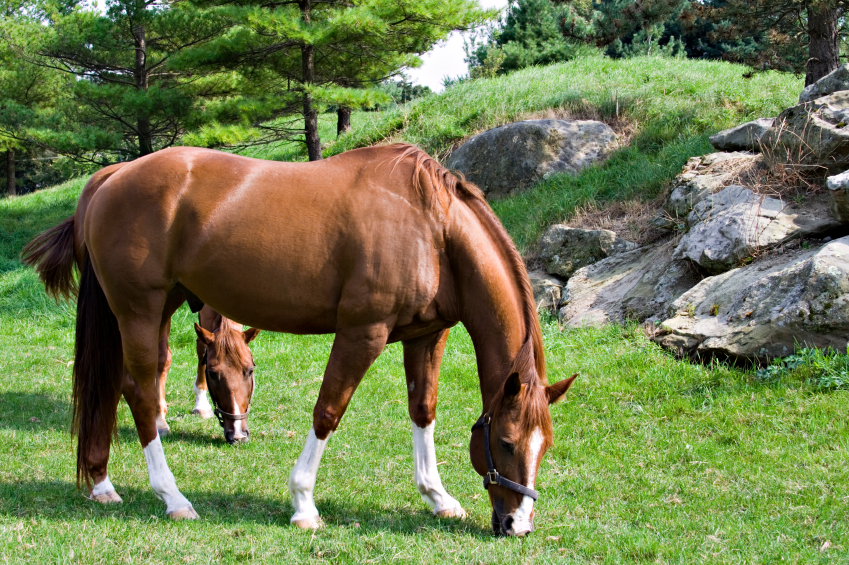 If you own a stallion or gelding, one of your tasks as a responsible horse owner is cleaning of the “sheath”. The sheath being the fold or pocket of skin that encompasses the penis, it is also called the prepuce. The sheath is formed by a double layer of sliding skin, with the internal layer containing sebaceous glands that secrete lubricating oils. A waxy substance, called smegma, comprised of dirt and dead skin cells can accumulate in this area, and may also form a “bean”, a hardened ball of smegma located in the urethral diverticulum of the penis, a grove around the urethral opening. Smegma should be periodically removed as it may become a source of infection. Also the bean can grow to a significant size, potentially restricting the flow of urine. Sheath cleaning is messy, but essential job and it can also be a risky business if your stallion or gelding is not accustomed to it, so it is important to be appropriately prepared and have a full understanding of what’s involved.
If you own a stallion or gelding, one of your tasks as a responsible horse owner is cleaning of the “sheath”. The sheath being the fold or pocket of skin that encompasses the penis, it is also called the prepuce. The sheath is formed by a double layer of sliding skin, with the internal layer containing sebaceous glands that secrete lubricating oils. A waxy substance, called smegma, comprised of dirt and dead skin cells can accumulate in this area, and may also form a “bean”, a hardened ball of smegma located in the urethral diverticulum of the penis, a grove around the urethral opening. Smegma should be periodically removed as it may become a source of infection. Also the bean can grow to a significant size, potentially restricting the flow of urine. Sheath cleaning is messy, but essential job and it can also be a risky business if your stallion or gelding is not accustomed to it, so it is important to be appropriately prepared and have a full understanding of what’s involved.
How often should I clean the sheath?
The general recommendation is to perform sheath cleaning about 1-2 times a year. However, it may depend upon the individual, some males have a tendency to accumulate more smegma than others or carry a strong odor when they are getting “dirty”. Therefore more regular cleaning may be required. Some show barns may include sheath cleaning in their regular grooming routine, on a monthly or biweekly basis.
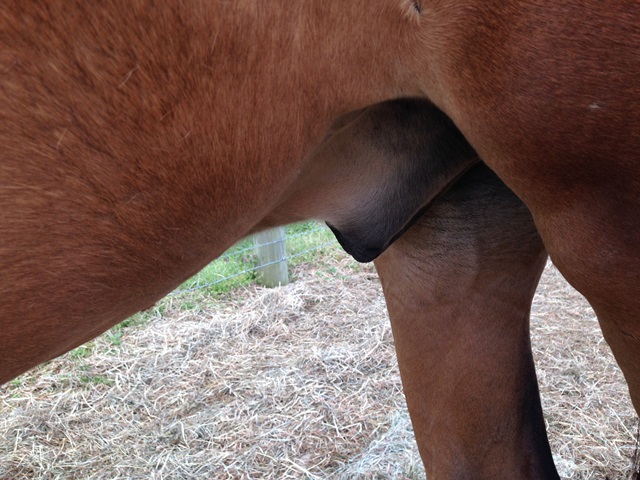 An important point to consider is that the horse’s sheath contains a normal healthy population of bacteria that help maintain the environmental balance within the sheath. Use of strong soaps or detergents on a regular basis may disrupt this balance, and that may actually cause harm, or make it even dirtier than normal.
An important point to consider is that the horse’s sheath contains a normal healthy population of bacteria that help maintain the environmental balance within the sheath. Use of strong soaps or detergents on a regular basis may disrupt this balance, and that may actually cause harm, or make it even dirtier than normal.
Geldings generally require sheath cleaning more than stallions. This is because geldings rarely fully extrude the penis, so smegma doesn’t have an opportunity to be expelled. Stallions drop out their penis on a more regular basis, and the movement of the penis into and out of the sheath can knock off smegma. Although therein also exists an opportunity to be exposed to more dust and dirt. Breeding stallions usually receive penis washing prior to semen collection for artificial insemination, and even if they cover a mare by natural service, there exists an opportunity to knock off some of that smegma during intercourse.
What supplies do I need?
For the technician performing the sheath cleaning, a pair of rubber gloves is essential. Since you often have to extend your arm way up into the sheath, you might want to ask your vet for an OB sleeve, so your full arm is covered. Smegma has a strong odor and if it gets on your shirt sleeve, you’ll smell it all day!
To protect those sheath friendly microorganisms, never use antibacterial soap, it is preferable to use a commercial sheath cleaner (such as Excalibur or Equipro). These products cut through the grease, have a pleasant odor, and make sheath cleaning easier. Never use an iodine or Betadine-based soap, or any medicinal shampoo, they can be irritating to the sheath and/or penis. Additional items would include paper towels and warm water - your horse will appreciate it over cold water.
How do I clean the sheath?
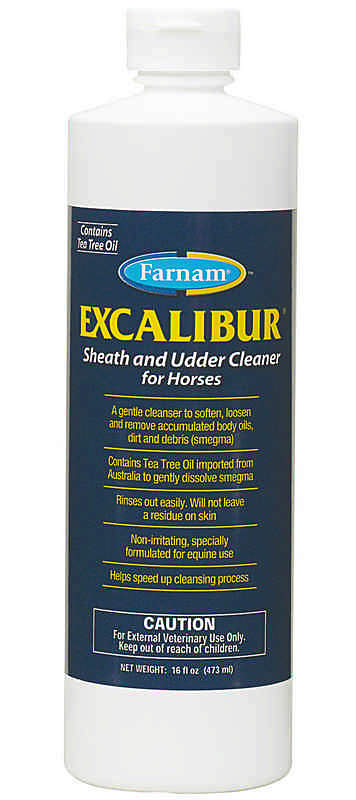 Not all stallions or geldings are going to be enthusiastic about you manhandling their private parts, so it is a good idea to introduce the concept gradually, by getting him familiar with placing your hand on his sheath, and then manipulating the sheath, before you graduate to inserting your hand into the sheath, going deeper, and finally holding the head of the penis. Don’t forget about the application of water to his sheath and the splashing of water on his hind legs too, introduce those gradually as well. As always, when working around horses you should approach them carefully, stand close to the horse’s shoulder and run your hands along his body and under his belly before moving your hands back towards his sheath. Don’t surprise him with any sudden movements and always be conscientious of the possibility of getting kicked, or him spooking or moving suddenly in objection to your efforts. As long as the sheath cleaning procedure is appropriately introduced, your stallion or gelding should accept it as he does other routine grooming procedures, and many are willing to accept the hose directly onto and into the sheath, which does make rinsing much easier.
Not all stallions or geldings are going to be enthusiastic about you manhandling their private parts, so it is a good idea to introduce the concept gradually, by getting him familiar with placing your hand on his sheath, and then manipulating the sheath, before you graduate to inserting your hand into the sheath, going deeper, and finally holding the head of the penis. Don’t forget about the application of water to his sheath and the splashing of water on his hind legs too, introduce those gradually as well. As always, when working around horses you should approach them carefully, stand close to the horse’s shoulder and run your hands along his body and under his belly before moving your hands back towards his sheath. Don’t surprise him with any sudden movements and always be conscientious of the possibility of getting kicked, or him spooking or moving suddenly in objection to your efforts. As long as the sheath cleaning procedure is appropriately introduced, your stallion or gelding should accept it as he does other routine grooming procedures, and many are willing to accept the hose directly onto and into the sheath, which does make rinsing much easier.
Once the horse is desensitized to the procedure 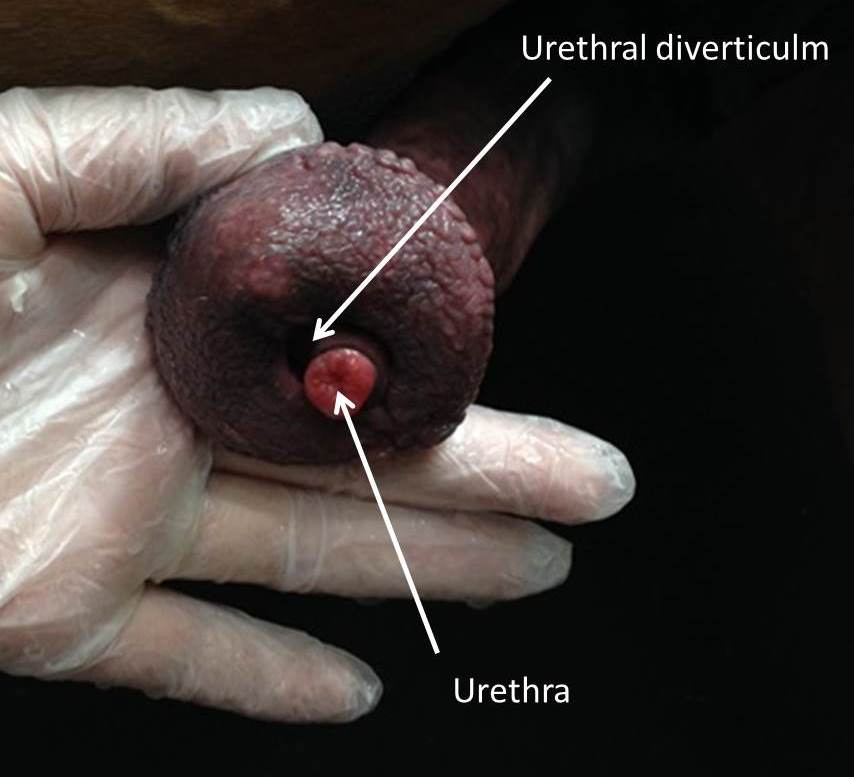 begin by introducing a gentle stream of warm water into the sheath from a hose, a large needleless syringe or through the use of wet paper towels. The warm water will loosen and soften the dirt making it easier to remove. Then put a generous dollop of sheath cleaner in your hand, reach up into your horse's sheath and spread it around. Depending upon the product instructions, you may leave the product in place for several minutes, allowing the grease cutting action to take effect. Then introduce a wet paper towel and gently work the accumulated grime loose. When the towel gets soiled, grab a new one, and keep working until the towel comes back clean. Clean all the way from his sheath's opening up to the base of his penis. Depending on how dirty the sheath is, you may need to use additional cleaner as you go.
begin by introducing a gentle stream of warm water into the sheath from a hose, a large needleless syringe or through the use of wet paper towels. The warm water will loosen and soften the dirt making it easier to remove. Then put a generous dollop of sheath cleaner in your hand, reach up into your horse's sheath and spread it around. Depending upon the product instructions, you may leave the product in place for several minutes, allowing the grease cutting action to take effect. Then introduce a wet paper towel and gently work the accumulated grime loose. When the towel gets soiled, grab a new one, and keep working until the towel comes back clean. Clean all the way from his sheath's opening up to the base of his penis. Depending on how dirty the sheath is, you may need to use additional cleaner as you go.
Although dropping of the penis can certainly make sheath cleaning easier, it is not necessary, you can still do an effective job by just reaching your hand up all the way inside the sheath. In some cases your stallion or gelding may be willing for you to gently grasp the head of the penis and carefully pull it out of the sheath. Although in most cases this is uncomfortable for them and may not be appreciated. However, there are always some that don’t seem to mind the process at all, and will happily relax and drop their penis out for you. This is more likely to be the case with a stallion, where the warm water and manipulation may be stimulating to them, resulting in dropping of the penis. If you are working with a non-breeding stallion, it is often preferable to perform sheath cleaning at the end of a grooming session, so it is perceived as a grooming procedure, not a breeding related activity.
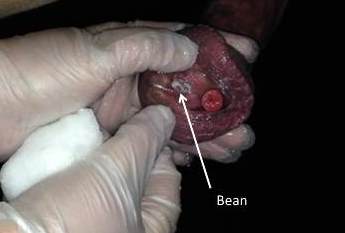 Once you have removed all the smegma from the sheath, check for and remove the “bean” (photo left). The bean is usually found in the urethral diverticulum (photo above right) which is a pocket that surrounds the opening of the urethra within the head of the penis. Finally, rinse thoroughly with clean water and clean towels. Or, if your horse will tolerate it, run the hose up inside his sheath.
Once you have removed all the smegma from the sheath, check for and remove the “bean” (photo left). The bean is usually found in the urethral diverticulum (photo above right) which is a pocket that surrounds the opening of the urethra within the head of the penis. Finally, rinse thoroughly with clean water and clean towels. Or, if your horse will tolerate it, run the hose up inside his sheath.
What if my stallion or gelding won’t accept the procedure?
Some horses object to sheath cleaning and will require sedation by your veterinarian. Light sedation may also help the horse "drop out" his penis for easier cleaning. To save time and money, ask your vet to clean your horse's sheath during another routine procedure that involves sedation, such as dentistry. We would not recommend the use of acepromazine for sedation, as this agent has been associated with priapism (persistent penile erection).
What else should I be concerned about?
Another reason for regularly cleaning your gelding's sheath is to look for any swellings or lesions that might require treatment, for example:
Summer Sores
These are raw, ulcerated lesions that have a crusty covering and bleed easily. They are caused by the larvae of a stomach worm, Habronema. The larvae are shed in feces, picked up by houseflies and then carried to wound sites or tissues around the eyes, lips and groin area. The infection causes an inflammatory reaction, or summer sore, that can be incredibly itchy. Persistent summer sores are extremely bothersome and slow to heal, and they may require surgical removal. Working with your veterinarian to develop a properly managed parasite-control program that includes effective fly control and dewormer, along with adequate sanitation, is the best way to protect horses from infection.
Squamous Cell Carcinoma
A squamous cell growth may look like a small sore or a red, raised bump. It may also appear similar to a summer sore, so a biopsy may be required to tell the difference. As it grows, squamous cell carcinoma can begin to invade surrounding tissues, including the eye or even bone. It can also metastasize to other parts of the body. The skin form is treatable (surgery combined with follow-up treatment is the best option in many cases). If it metastasizes, this cancer can be fatal. Appaloosas, Paints, palominos and other geldings with pink or mottled skin are more prone to carcinoma of the penis and sheath.
Melanomas
Melanoma in horses is usually a benign cancer of melanocytes (pigment cells) usually found in the skin. In addition to the underside of the tail, the perineal and peri-anal regions, the penis and sheath are common sites for a melanoma, which appears as a dark lump or nodule, often dangling from the outer skin of the sheath. They are usually superficial, slow growing and not painful. However, there exists the possibility for a melanoma to become metastatic, and that is a greater cause for concern. Metastatic melanomas might appear as a rapidly spreading series of lumps or nodules, or even as vast rippling sheets of black tumor masses across the tissue. Your vet may recommend removing melanomas on the sheath before they become invasive or so enlarged that they threaten the flow of urine. Gray horses in particular are victims of melanoma and it is described to be nearly ubiquitous in >15 year old grey horses.
Swelling, Odor or Itching
These symptoms may potentially signal irritation infection. Persistent swelling of the entire sheath, or edema, can be a warning of congestive heart failure, especially in older horses.
Sheath cleaning is not the most pleasant of horse care tasks; however it is nonetheless important to set some time aside to perform periodic sheath cleaning of your stallion or gelding, so you can maintain health and cleanliness and inspect the area for potential clinical issues that may require veterinary treatment. For a more visual guide you’ll find several videos on You Tube.

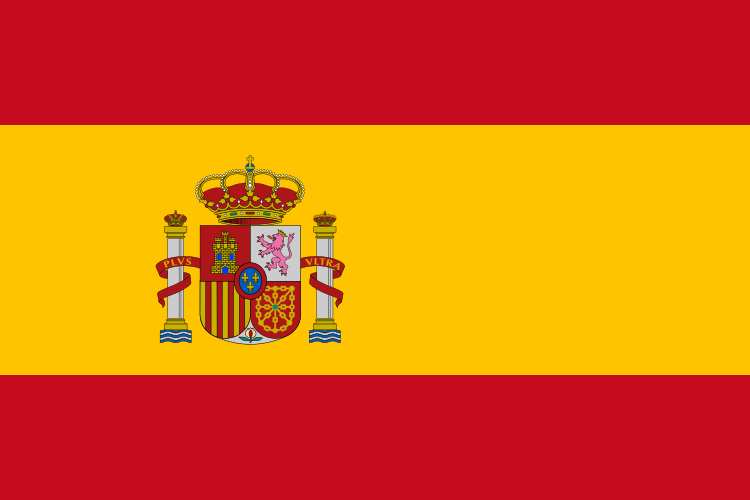
Log in to join the conversation.